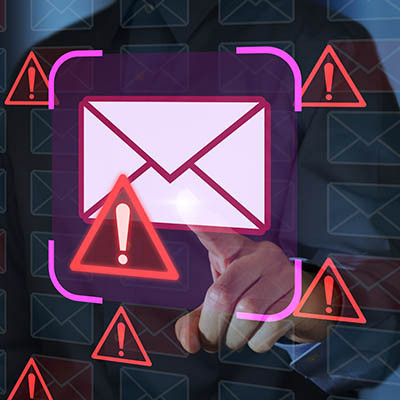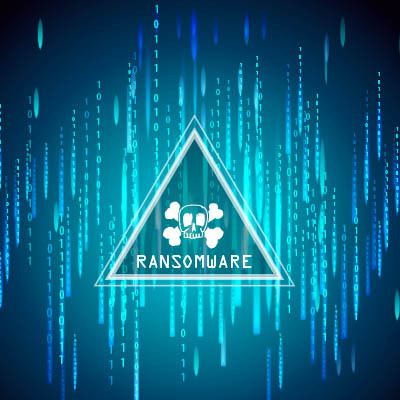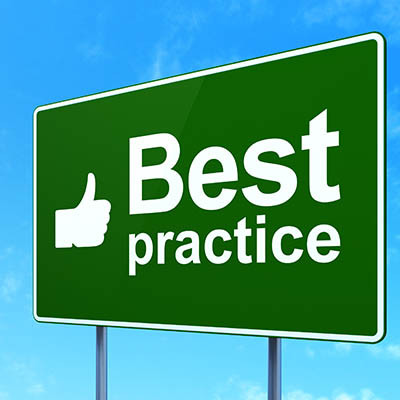Do you ever feel like your PC is taking longer to boot up than you’d like? It might not be your imagination; it might actually be taking longer than it should. Today, we’ll go over how you can use the Event Viewer app to get an idea of how long it’s taking your computer to boot up, as well as what numbers you should aim for.
Washington Works Blog
Cyberthreats aren’t just occasional inconveniences, especially nowadays. They are constant, evolving, and some are so highly sophisticated that you can hardly blame yourself if you fall victim to them. This is why proactivity is so important. Businesses that take a reactive approach to cybersecurity find themselves in a never-ending cycle of damage control.
Your team is your first and most vital defense against cyber threats. A single mistake—a click on a malicious link, a weak password, or a lapse in judgment—can compromise your entire organization. Cybersecurity isn't just an IT issue; it's a company-wide responsibility.
To build a resilient defense, your team needs comprehensive, recurring training. This month, we will give you a brief outline of the essential cybersecurity topics you must cover:
The very tools designed to make our jobs easier, faster, and more flexible often feel like the source of our deepest stress. From the endless barrage of email notifications to the pressure of being always available, modern work technology is a true double-edged sword.
So, does technology create stress or remove stress in the workplace? The answer, like most things in the digital age, is both.
Small and medium-sized businesses face a relentless challenge: competing with industry titans while grappling with supply chain complexity. The good news is that the right technology is now more accessible and affordable than ever. This month, let's explore how you can strategically leverage tech to turn your supply chain from a cost center into a powerful competitive advantage.
Microsoft Excel is a powerful tool that businesses leverage every day to store, track, and report on data, but it can be tedious to work in the document without knowing all of its little tricks. Today, we want to share with you one that could save you valuable clicks and time spent copying and pasting values. You’ll learn how to enter the same data into multiple cells at once.
Your business technology is not just a tool; it's the very foundation upon which modern enterprises are built. From optimizing operations to enhancing customer experiences, strategic technology implementation is paramount for growth and competitive advantage. We invest heavily in it, pour resources into its adoption, and celebrate its initial successes. What happens when that investment starts to become a liability, however?
Today, simply working harder isn't enough; you need to work smarter. This is where productivity software comes into play. Far from being just a suite of digital tools, this technology fundamentally transforms the way employees operate, leading to dramatic gains in efficiency and overall output. How does this software actually work to boost your team's performance? This month, let's dive into the mechanisms that make it an indispensable asset for the modern workplace.
Email attachments are a staple of digital communication, but they’re also one of the most common ways malware, viruses, and phishing schemes sneak past users. We’re all guilty of clicking that little paperclip before we assess the factors that could really end up being a pain in the side for you and your business. Before you click and potentially regret it, you need to take a beat. This month, we give you a comprehensive checklist for securely opening email attachments.
Let's be honest, we're all living through some wild times. Social media is everywhere, and nearly everyone uses it to one degree or another. We've all seen a simple online discussion devolve into relationship-ruining conflict; and it happens fast. The key to not letting it wreck your life is to use these digital spaces with purpose.
This month, we're dropping some simple tips to help you build a healthier, more meaningful online presence. Let’s get started:
Technology. It’s the engine of modern business, promising efficiency and connectivity. In business, we’re constantly bombarded with stories (real or not) of competitors that have scaled overnight with a single app. While this potential is real, it often fosters an environment where unrealistic expectations about technology take root. This "tech dreamworld" can be more damaging to your business than a faulty server.
Getting hit by a ransomware attack is never what you could describe as a positive experience. In fact, it is a nightmare scenario for anyone. The immediate panic, the locked files, the looming demand for payment—it’s a chaotic and stressful experience. While most people understand the basic premise of ransomware, there’s a lot more to these sophisticated attacks than meets the eye.
There are some lesser-known facts that can significantly impact how you respond and, crucially, how you recover. Let's get into it.
Business owners love to point to time theft and quiet quitting as reasons for lost productivity, seeing them as a decline in work ethic. Unfortunately, they are not seeing the forest through the trees in a lot of cases. Let's take a look at quiet cracking; or the slow, gradual breakdown of a knowledge worker's mental and emotional well-being under constant workplace pressure. It's not a sudden burnout, but a steady, silent erosion that's happening more than you might think.
Collaboration with external vendors is a necessity. From software and cloud services to marketing and logistics, vendors are crucial partners that enable your business to operate and compete. This often requires vendors to access your business' sensitive data. Without proper controls, granting this access can expose your company to significant risks. Let's take a look at why vendors probably don’t need access to all of your data.
Our phones are basically an extension of our hands, and social media is where many people connect. Whether you're building a personal brand, keeping up with friends, or just doomscrolling, these platforms have become a huge part of our lives. To help you navigate the digital chaos, there are six rules you should live by on social media.
Technology is the engine that drives most businesses, but even the most powerful engine can sputter and stall if not properly maintained. A simple slip-up with your technology can quickly turn into a major problem, costing you time, money, and even your reputation.
Here are five common ways businesses can unintentionally sabotage themselves with their tech:
The end of Windows 10 support is closer than you think. On October 14, 2025, Microsoft will officially stop providing free security updates, non-security updates, and assisted support for Windows 10. For businesses, this isn't just a minor inconvenience—it's a critical security and operational risk that demands immediate attention.
Nowadays, technology isn't just an advantage; it's an essential part of everything you do; and with endless new tools appearing, how do you decide which tech investments are genuinely good for your business and which are just distractions? Saying yes to everything can drain your budget, while saying no to the right innovation can leave you behind.
Navigating this is difficult and needs a smart approach. Here are key tips to help you know when to embrace new technology and when to politely decline:
The Internet is more than just a tool; it's the very foundation upon which many organizations are built. From managing customer data to facilitating global operations, our digital infrastructure is indispensable. What happens, then, when that foundation crumbles under a cyberattack? Unfortunately, we've seen firsthand the devastating effects hackers can have. This month, we talk about the problems associated with a hacking attack.



















